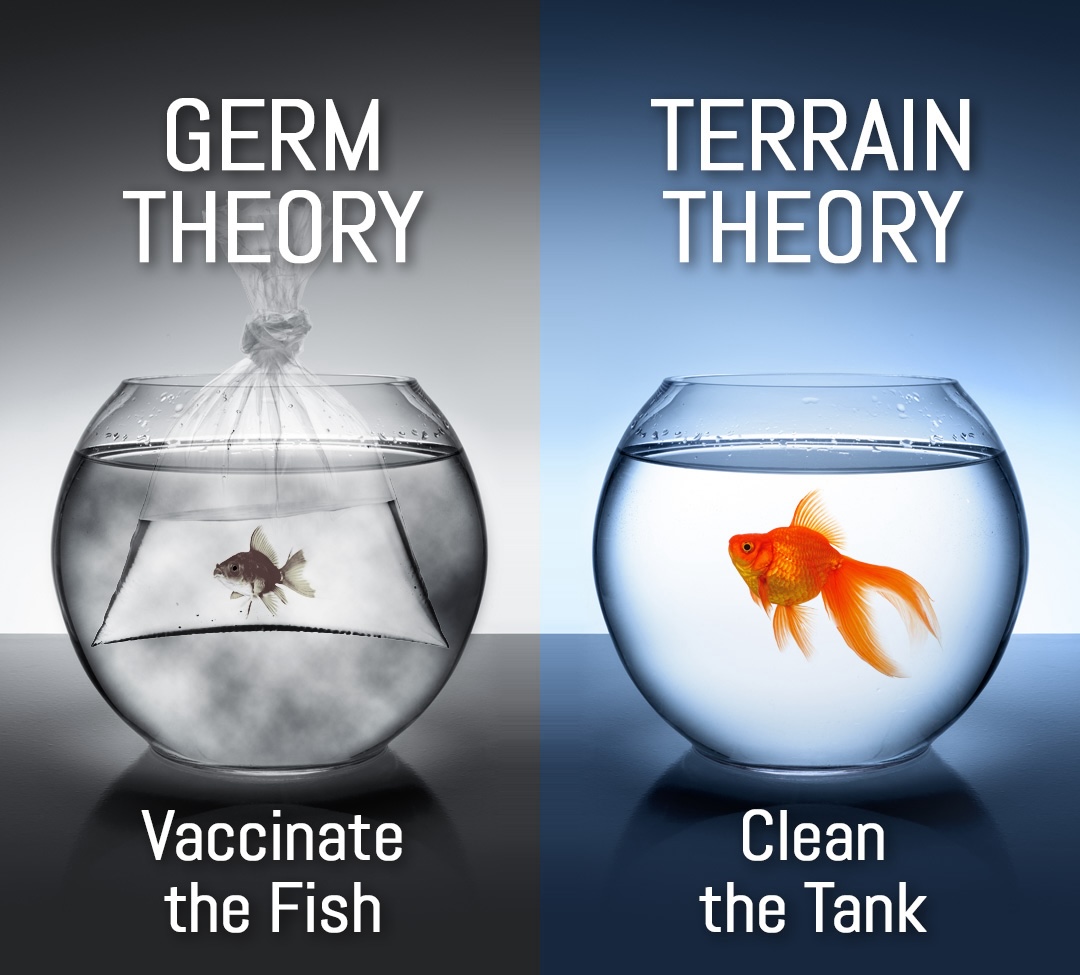For over a century, the germ theory of disease has dominated modern medicine. This theory, popularized by Louis Pasteur, proposes that microscopic pathogens like bacteria and viruses are the primary cause of illness. While germ theory has led to advances like vaccines and antibiotics, some argue it presents an incomplete picture of health and disease.
An alternative perspective known as terrain theory offers a more holistic view. Terrain theory, developed by Antoine Béchamp and others, suggests that the internal environment or “terrain” of the body is the key factor in health and illness. According to this theory, germs are opportunistic and only cause disease when the body’s internal environment is weakened or out of balance.
Historical Context and Key Figures
To understand the development of terrain theory, it’s important to look at some key figures and their work:
1. Antoine Béchamp (1816-1908): A contemporary of Pasteur, Béchamp proposed the idea of “pleomorphism,” suggesting that microorganisms can change form based on their environment. This concept is central to terrain theory.
2. Claude Bernard (1813-1878): A French physiologist who emphasized the importance of the “milieu intérieur” or internal environment in maintaining health.
3. Günther Enderlein (1872-1968): A German zoologist who expanded on Béchamp’s work, developing a theory of microbial life cycles influenced by the body’s internal conditions.
Key Principles of Terrain Theory
Proponents of terrain theory argue that:
1. A healthy, balanced internal environment naturally resists pathogens.
2. Focusing solely on killing germs ignores underlying factors that make us susceptible to illness.
3. Overuse of antibiotics and anti-microbial products may harm beneficial microbes and weaken our natural defenses.
4. Nutrition, stress management, and lifestyle factors play a crucial role in maintaining health.
5. The microbiome and our relationship with microbes is complex and not inherently adversarial.
Supporting Evidence and Studies
Several researchers and studies have provided evidence that supports aspects of terrain theory:
Alexander Ugolev’s Frog Experiment
Russian physiologist Alexander Ugolev conducted an intriguing experiment in the 1970s that challenges conventional ideas about digestion and the body’s internal environment. He prepared two groups of frogs: one group was fed cooked food, while the other was fed raw food. Ugolev then extracted the intestinal juice from both groups and used it to digest food in vitro.
The results were surprising: the intestinal juice from frogs fed raw food was able to digest both raw and cooked food, while the juice from frogs fed cooked food could only digest cooked food. This suggests that the diet significantly influenced the digestive capabilities of the frogs, lending support to the idea that our internal terrain is shaped by what we consume.
Francis Pottenger Jr.’s Cat Studies
In the 1930s, Dr. Francis Pottenger Jr. conducted a decade-long study on the effects of processed foods on cats. He divided cats into groups, feeding some raw meat and milk, while others received cooked meat and processed milk.
The cats fed raw foods remained healthy throughout their lives, while those fed processed foods developed various health problems and showed signs of physical degeneration over generations. This study highlights the potential long-term impacts of diet on health and genetic expression, aligning with terrain theory’s emphasis on nutrition.
Weston A. Price’s Global Studies
Dentist Weston A. Price traveled the world in the 1930s, studying the diets and health of various indigenous populations. He found that people eating their traditional, nutrient-dense diets had excellent health and dental formation, while those who had adopted modern, processed foods showed signs of physical degeneration.
Price’s work emphasizes the importance of nutrition in maintaining health and preventing disease, a key aspect of terrain theory. His findings suggest that the shift to modern diets may be creating an internal environment more susceptible to disease.
Vilhjalmur Stefansson and the Inuit Diet
Arctic explorer Vilhjalmur Stefansson lived among the Inuit in the early 20th century and observed their remarkable health despite a diet consisting almost entirely of animal products. This diet, extremely high in fat and virtually devoid of fruits and vegetables, seemed to protect the Inuit from many common diseases of civilization.
Stefansson’s observations challenge conventional nutritional wisdom and support the idea that different dietary approaches can create a healthy internal terrain. It suggests that the body can adapt to various nutritional environments, provided they are natural and unprocessed.
Implications and Modern Relevance
While both germ theory and terrain theory likely hold elements of truth, terrain theory encourages us to take a more comprehensive approach to health. Rather than just battling germs, we can focus on creating an internal environment conducive to wellness through diet, exercise, stress reduction, and other lifestyle factors.
Modern research is increasingly recognizing the importance of factors emphasized by terrain theory:
1. The Human Microbiome Project has revealed the crucial role of our microbial ecosystems in health and disease.
2. Epigenetics shows how environmental factors can influence gene expression, supporting the idea that our “terrain” can change.
3. The field of psychoneuroimmunology explores how mental states affect our immune system and overall health.
4. Increasing antibiotic resistance highlights the limitations of a purely germ-focused approach to disease.
Conclusion
Exploring terrain theory may lead to new insights and approaches for preventing and addressing disease. As our understanding of human health continues to evolve, it’s worth considering multiple perspectives to develop a more complete picture.
Integrating aspects of terrain theory into our health practices could involve:
1. Prioritizing whole, nutrient-dense foods and considering traditional diets.
2. Reducing exposure to environmental toxins that may disrupt our internal balance.
3. Managing stress and prioritizing mental health as part of physical wellbeing.
4. Using antibiotics judiciously and supporting our microbiome with probiotics and fermented foods.
5. Considering the impact of lifestyle choices on our overall health, not just on specific pathogens.
While germ theory has its place and has led to many important medical advancements, terrain theory reminds us of the complexity of human health and the importance of holistic approaches. By considering both perspectives, we may be able to develop more effective strategies for maintaining health and addressing disease in our modern world.





Leave a Reply